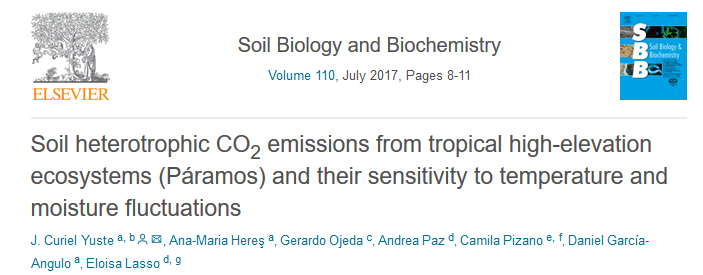BC3 Journal Article “Soil heterotrophic CO 2 emissions from tropical high-elevation ecosystems (Páramos) and their sensitivity to temperature and moisture fluctuations”


Go to external source
Curiel Yuste, J.C., Heres, A.M., Ojeda, G., Paz, A.,Pizano, C.,Pizano, D., García-Angulo, D., Lasso, E. 2017. Soil heterotrophic CO 2 emissions from tropical high-elevation ecosystems (Páramos) and their sensitivity to temperature and moisture fluctuations. Soil Biology and Biochemistry. 110. 8-11. DOI (10.1016/j.soilbio.2017.02.016).
Abstract
Increasing temperatures and changes in the intensity and frequency of precipitations may impact the ability of tropical high-elevation Andean ecosystems (Páramos) to store and retain carbon (C). We, therefore, examined how warming and fluctuations in soil moisture could influence soil CO2 emissions from heterotrophic respiration (RH, the result of microbial respiration), of two Páramos of contrasting climatic regimes within their area of distribution. We here show high sensitivity of both RH and Q10 under warmer and fluctuating moisture conditions. Together with the high rates of C-normalized RH compared to other soil C-rich ecosystems from higher latitudes (2 μmol gC−1 h−1 versus 0,4 μmol gC−1 h−1, respectively) our results evidenced how soil heterotrophic-derived CO2 emissions could potentially increase under expected climate scenarios, eventually altering the capacity of soil Páramos to sequester C.
